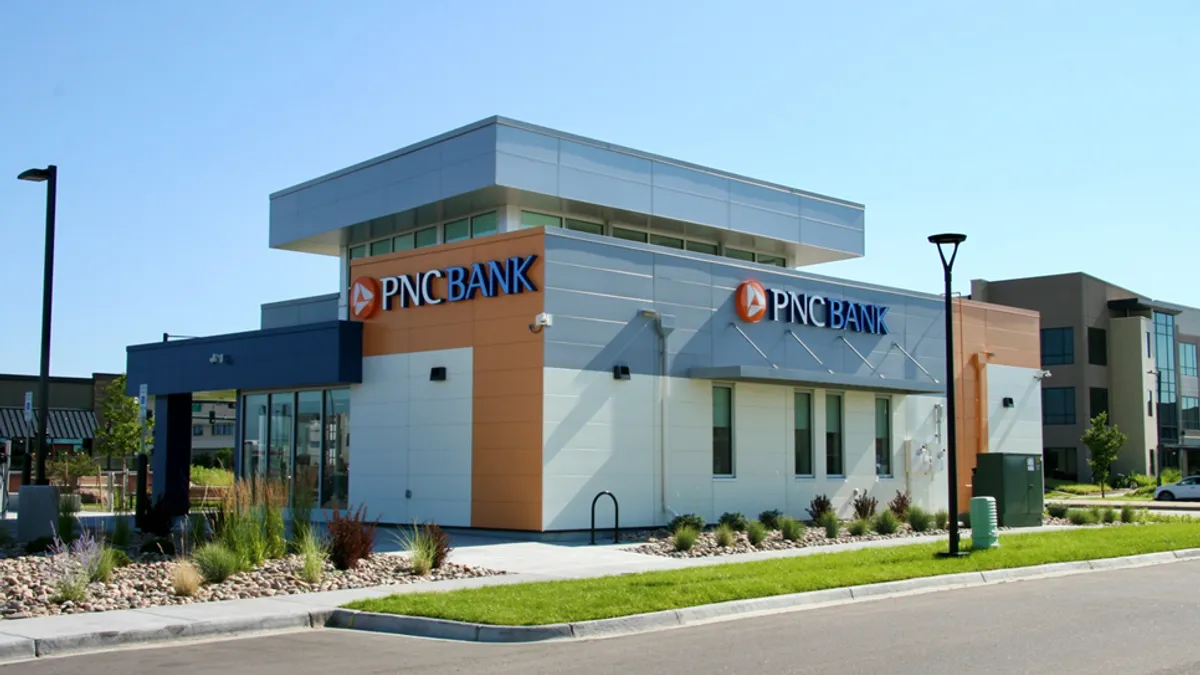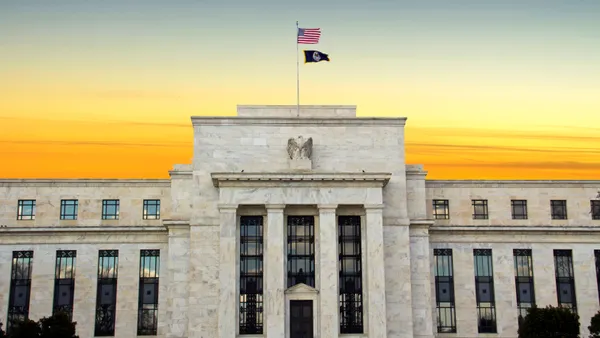Dive Brief:
- Goldman Sachs has overhauled its business units, according to a filing released Tuesday. The effort aims to highlight growth in the bank’s consumer segment and give investors more transparency in hopes of boosting a stock price that has remained relatively flat for more than a decade.
- For its next earnings call Jan. 15, the bank will report its earnings under four categories: investment banking, global markets, asset management, and consumer and wealth management.
- The newly created consumer and wealth management unit will house online lender Marcus and business tied to the bank’s credit-card partnership with Apple. Goldman Sachs eliminated its investing and lending segment, whose profits investors found hard to predict.
Dive Insight:
Despite Goldman Sachs's emphasis on consumer growth, the bank still leans heavily on its legacy businesses. Goldman’s consumer unit generated $822 million in revenue over the four quarters ended Sept. 30, representing 2.4% of the bank’s total revenue during the period, according to Reuters. Goldman reported $5.5 billion worth of consumer loans as of Sept. 30, up 22% from the end of 2018, according to the filing.
By reorganizing around individual client segments, Goldman Sachs is setting its quarterly reports to more closely resemble those of JPMorgan Chase and Bank of America, which investors value more highly.
"The presentation is more consistent with the way the business is run and the way it is presented by peers," Mike Mayo, an analyst at Wells Fargo, told Bloomberg. "This attitude shows that management is aware of an underperforming stock price."
Goldman’s stock has jumped 38% in the past year, but it still trades lower than most major U.S. banks — reportedly a sore spot for the company’s top executives. CEO David Solomon and the bank's president and chief operating officer, John Waldron, told Goldman's partners at an off-site meeting last year they believed the stock, now worth $230 a share, could trade at $400 or more, attendees told The Wall Street Journal.
Since the 2007-08 financial crisis, the bank has launched a consumer banking business, cut its funding costs and reined in risky trading. But a long slump in Goldman's trading arm has held back the bank's trading price, and investors see the bank's value as more vulnerable to market swings.
Goldman is set to hold its first investor day Jan. 29, where it may detail any shifts in strategy. Reuters reported in November the bank may move away from a goal to find $5 billion in fresh annual revenue by 2020, instead focusing on other metrics such as broad efficiency ratio and profitability measures.
"The new reporting structure ... should help drive increased accountability in how it executes on its relatively new strategy," Barclays analyst Jason Goldberg told Reuters on Tuesday.
Goldman last revamped its financial disclosures in 2011, when it began divulging how much money it made investing for its own account. The result — the "investing and lending" segment — became a $130 billion mishmash of loans and proprietary bets that never caught on with shareholders.
Aside from eliminating that unit and adding one tailored to consumer and wealth management, Goldman is renaming two units: "Global markets" was once known as institutional client services, and investment management became "asset management."












